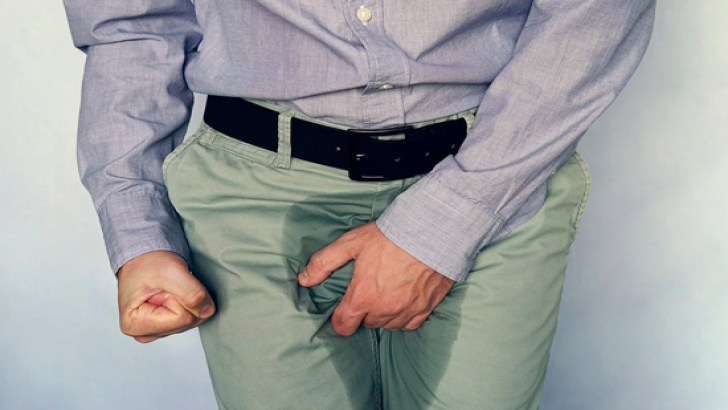
Incontinence Is A Distressing Condition That Affects Millions Of People Worldwide, It Is Important To Recognize That Incontinence Is Not An Irreversible Problem.
Incontinence: A Nightmare That Can Be Overcome
Incontinence is a distressing condition that affects millions of people worldwide, it is important to recognize that incontinence is not an irreversible problem.
Incontinence is characterized by the involuntary loss of urine, resulting in an inability to control bladder.
It can occur due to a variety of underlying factors, including weak pelvic floor muscles, nerve damage, anatomical abnormalities, or certain medical conditions.
What are the main causes of Incontinence?
Understanding the causes of incontinence is crucial for effective management.
Risk factors that plays a significant role
• Age.
• gender
• pregnancy
• Repeated delivery
• obesity
Additional to ither specific conditions, such as urinary tract infections, neurological disorders, & hormonal imbalances, that can contribute to the development of incontinence.
Types & Symptoms of urinary incontinence:
Many people experience occasional, minor leaks of urine. Others may lose small to moderate amounts of urine more frequently.
So, we need to understand all types of Urinary Incontinence:
• Stress incontinence:
Urine leaks when you exert pressure on your bladder by coughing, sneezing, laughing, exercising, or lifting something heavy.
• Urge incontinence:
You have a sudden, intense urge to urinate followed by an involuntary loss of urine. You may need to urinate often, including throughout the night. Urge incontinence may be caused by a minor condition, such as infection, or a more severe condition such as a neurological disorder or diabetes.
• Overflow incontinence:
You experience frequent or constant dribbling of urine due to a bladder that doesn't empty completely.
• Fistula Incontinence
• Functional Incontinence: Due to physical disability resulting from a congenital defect, an accident, a previous surgery, or an impairment of consciousness.
• Mixed incontinence:
You experience more than one type of urinary incontinence, most often this refers to a combination of stress incontinence and urge incontinence.
Diagnosis of Urinary Incontinence:
Urinary incontinence is common, increases in prevalence with age, & affects quality of life for Children, men & women. The initial evaluation occurs with the urologist; the basic workup is aimed at identifying possible reversible causes.
The next step is to determine the type of incontinence (urge, stress, overflow, or mixed) and the urgency. a review of the patient's completed voiding diary, a physical examination, &, if stress incontinence is suspected, a cough stress test. Other components of the evaluation include laboratory tests & measurement of post void residual urine volume. If the type of urinary incontinence is still not clear, or if red flags such as hematuria, obstructive symptoms, or recurrent urinary tract infections are present, referral to a urologist or urogynecologist should be considered.
>>>>>> Book now with our Urologists
The urodynamic machine is a digital equipment used in this test can measure urine flow and pressure in the bladder by using X-rays & it helps diagnose lower urinary tract problems by showing how well your bladder, sphincters, and urethra work together to store and release.
>>>>>> Book your Urodynamic Test Now
Treatment Options of Urinary Incontinence:
• Non-invasive interventions: such as lifestyle modifications, bladder training, pelvic floor exercises, & behavioral therapies, are discussed in detail Additionally, pharmacological treatments, such as anticholinergic medications & hormone therapy, or Laparoscopic injection of bladder with Botox.
• surgical options: including slings, artificial sphincters, repair prolapse & neuromodulator, are examined.
How could lifestyle Modifications and Coping Strategies help with Urinary Incontinence?
Adopting healthy lifestyle habits & implementing coping strategies can significantly improve the management of incontinence, Such as:
• fluid management:
ü Be mindful of how much you are drinking. Don't gulp down anything.
ü Stop drinking coffee and soda. ...
ü Avoid alcohol. ...
• weight loss:
Weight loss helps urinary leakage because losing weight in the abdominal area puts less pressure on the bladder.
• Regular exercise routines:
Get at least 150 minutes of moderate aerobic activity or 75 minutes of vigorous aerobic activity a week.
Also there are other specific exercises that may your Doctor advice like Kegel exercise.
At the end, Incontinence may be considered a nightmare, but with the right knowledge & comprehensive management, it can be effectively controlled, if not completely eliminated. . By combining medical interventions, lifestyle modifications, & coping strategies, individuals, ultimately turning the nightmare of incontinence into a manageable reality.
>>>>>> Book now with our Urologists
Lorem ipsum dolor sit amet consectetur adipisicing elit. Eius magni exercitationem aliquid porro.
Stay informed and connected with our medical center platform by subscribing today for the latest updates, health tips, and exclusive offers.